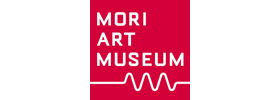
Che Guevara 30 Years After (A Revolution Goes On)
2005
print on fabric
200x300 cm
Courtesy: Galerie Volker Diehl, Berlin and Guelman M. Gallery, Moscow
All About Laughter: Humor in Contemporary art
Tamy Ben-Tor » Blue Noses » John Bock » Olaf Breuning » Marcos Chaves » WANG Gongxin » Rodney Graham » Jennifer Allora & Guillermo Calzadilla » Peter Land » Christian Marclay » Trine Lise Nedreaas » Robin Rhode » CHEN Shaoxiong » ZHOU Tiehai » Roi Vaara » Erwin Wurm » Sislej Xhafa » & others
Exhibition: 27 Jan – 6 May 2007

Mori Art Museum
6-10-1 Roppongi, Minato-ku
106-6150 Tokyo
+81-3-57778600
Sun-Thu 10-22 . Fri, Sat 10-24
Contemporary artists often look at the world from slanted perspectives in order either to highlight or counteract the conservatism of social norms, systems and thought. In doing this they imply alternative systems and approaches. A similar role can be attributed to humor, the source of laughter, which may include jokes, parody, comedy, irony, satire and nonsense. The creation of a perspective that distorts "normal" views of the world may have the effect of exposing people's real intentions, or it may enable an issue or situation to be viewed from multiple angles. Under certain circumstances it can also serve to illuminate nearly forgotten sources of pain, still evident in the dark corners of society. The laughter that results from such distortions, or shifts in perspective, acts like an opaque filter, softening the glare of a direct confrontation with something that might otherwise be unpleasant. The very act of laughing relieves stress, tension, and even fear. Today's world is full of tensions and anxieties, both visible and invisible, but laughter has the power, momentarily, to release us from ingrained realities. It is like a distant star that brings a glimmer of hope for the future when the way ahead is still in darkness. A joke cannot exist in isolation; it needs to be supported by ideas and thoughts. The same can be said of contemporary art in that it is also dependent on background to engender emotions and ideas that have not been previously experienced. "All About Laughter: Humor in Contemporary Art" focuses on the central role that laughter plays in contemporary art – a role that has previously been regarded as peripheral. The works presented here and the ideas behind them are varied, ranging from spontaneous slapstick to much more complex works that involve a scrupulous build up of narrative and context. All of the works in the show, however, employ ingenious strategies in their depiction of a subject as well as in the different ways they distort the perspectives through which they look at it. These include not just visual, image-based strategies, but also performance, texts, playful narratives, and game-like characteristics that are designed to encourage visitor participation. What triggers laughter is personal, differing from individual to individual, but it is related to shared experience, memory, and feeling. There may be cases where humor is not transferable but, more often than not, as laughter spreads through public spaces like art museums, it infects other people, amplifying the original effect. The exhibition consists of about 200 works by about 50 artists. It is arranged into four parts. The first, "Anti-Art and Avant-Garde Laughter," covers the postwar counterculture active at the end of the 1950s and through the 1960s. Works have been chosen with particularly strong links to Fluxus artists or to the Tokyo-based Hi-Red Center group. The spirit of these movements continues to have a significant effect today. The artists included in this section are: Ay-O, Akasegawa Genpei / Hi-Red Center, Yoko Ono, George Maciunas and other Fluxus artists. The second part of the exhibition, "Everyday Laughter," shows contemporary art from the 1990s, and particularly concentrates on art that builds on 1960s attempts to fuse art with the everyday. In the early 1990s, when Cold War ideologies had failed, many artists became interested in elements of everyday life. For example, societal norms and routines were viewed from unconventional angles to produce a wry type of humor. Artists often selected small phenomena as their central themes and have used simple materials. In so doing they have altered the meanings of these phenomena to set visual traps that surprise and confound viewers' expectations. The artists represented here are: Marcos Chaves, Isozaki Michiyoshi, Jeon Joonho, Matt Johnson, Patrick Killoran, Kimura Taiyo, Kurashige Jin, Peter Land, Mads Lynnerup, Trine Lise Nedreaas, Porntaweesak Rimsakul, Will Rogan, Peter Rösel, Roi Vaara, Watanabe Eiji and Erwin Wurm. The third part of the show, "The Flip Side of Laughter," presents works from the 1990s onwards that highlight in a humorous and ironical way the impact of multiculturalism. Laughter has always been used as a tool to make sense of difference. Now, as more and more societies open their doors to different cultures, the frequency with which people must deal with difference has increased. The effects of this shift can be seen in contemporary art, where many artists now deliberately focus on the humorous peculiarities of their own cultures, or on the difficulties of intercultural communication. The same treatment is often given to the art world itself, with some artists producing exaggerated or satirical accounts of the art world's esoteric practices. The artists shown here are: Aida Makoto, Carlos Aomrares, Jennifer Allora, Guillermo Calzadilla, Tamy Ben-Tor, The Blue Noses, Gimhongsok, Jeon Joonho, Tim Lee, Ozawa Tsuyoshi, Chen Shaoxiong, Robin Rhode, Zhou Tiehai, Torimitsu Momoyo, Wang Gongxin, Wang Nengtao and Sislej Xhafa. The fourth and last part of the show, "Deviant Laughter," brings together a number of artists who use their imagination to deviate from the laws and practices of the real world. Diving freely into their imaginations, they blur and extend the boundaries between the real and imaginary, creating fantastic stories that might incorporate imaginary characters such as talking animals or strange beings. Language also plays an important role, used in unconventional ways to emphasize the works' narrative elements. Such divergence from the confines of reality into the limitless expanse of art may occasionally conceal a sense of delusion or loneliness, but it also gives the imagination a clean slate on which to envisage a possible new world. The artists in the fourth part are: Olaf Breuning, John Bock, Simon Evans, Rodney Graham, Carsten Höller, Christian Marclay, Gimhongsok, Imamura Tetsu, Kaneuji Teppei, Peter Land, Okayama Naoyuki, Tanaka Koki, Yamamoto Takayuki and Erwin Wurm.

video still from Women Talk about Adolf Hitler
2004
Video. 7 min. 40 sec.
Edited by Anat Ben David
Courtesy: the artist and Zach Feuer Gallery, New York

Untitled / Street Light
2005
C-print
45 x 30 cm
Collection: Tucci Russo Studio Per I'Arte Contemporanea, Turin

digital photo image from Untitled (Laugh Mask)
2005
video, 1 min. 55 sec. (loop)
in collaboration with André Sheik (camera) and Leo Domingues (editing)
photo: André Sheik